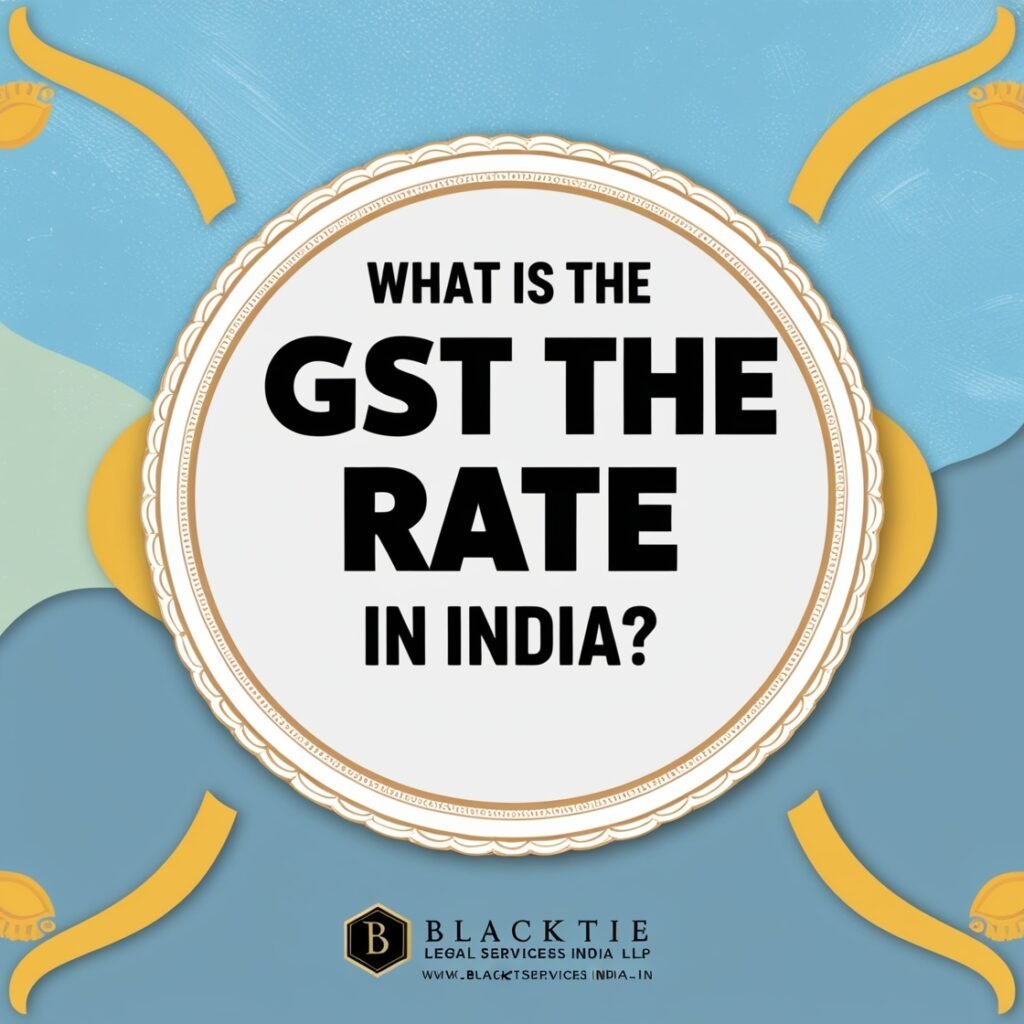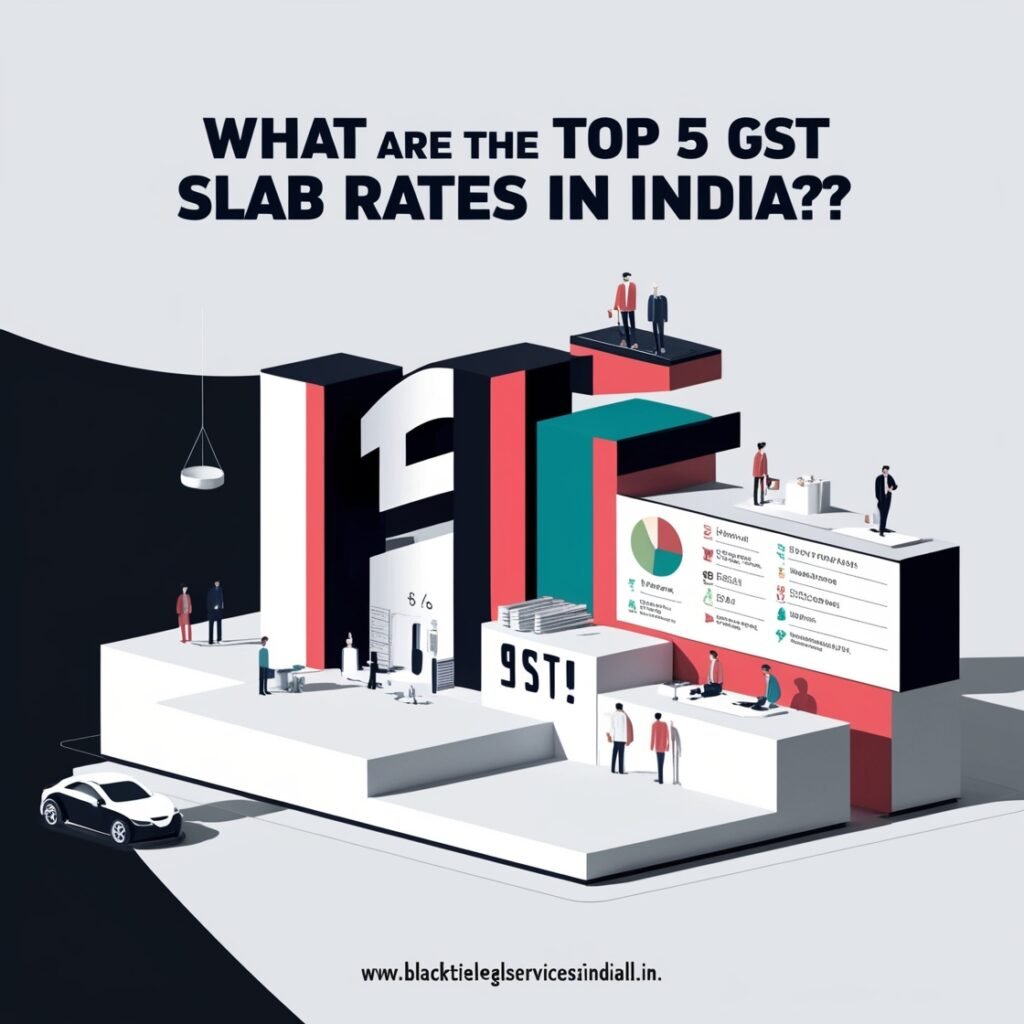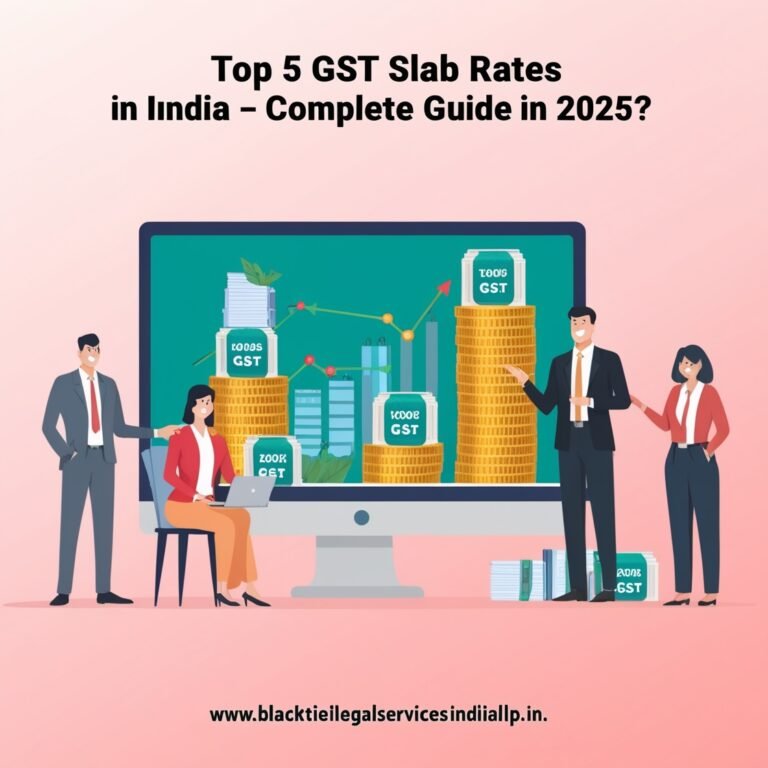In this blog, you will learn the top 5 GST slab rates in India and the categories of goods and services each GST slab taxes. These slabs make it easier for consumers and businesses to understand the tax system better. Here is a detailed description of the major GST rates that define India’s economy. The Goods and Services Tax (GST), a unified tax regime in India, simplifies the taxation of goods and services. The cumulative structure of GST is divided into multiple tax brackets to allow universality and minimal impact on various industries.
What is the GST Rate in India?
GST in India is an extensive, progressive, final destination tax that is imposed on each stage of production involving the supply of goods and services. There are different GST rates in India for specific goods and services that exist in the marketplace. The rates are grouped under the following revenue bands.
Key Points to Note
- GST rates are mutable and can be changed now and then after the recommendation of the GST Council.
- Most of the grouped services for example health care services and education are excluded from GST.
- Certain supplies of goods and services are subjected to a reverse charge mechanism that is the recipient of the supply makes the payment of tax.
1. 0% (Nil Rate):
- Basic food items namely new generation fruits and vegetables, cereal products, eggs, and salt respectively.
- In terms of the sectors that ranked highest in their proportion of revenue, SAHA’s largest percentages were in educational services and health care services.
2. 5%:
- Items that are considered to be fundamental needs include packaged food items, railway tickets, (non-AC), and economy class airfare.
- Lighting, Renewable energy equipment, life-saving drugs, and fertilizers.
3. 12%:
- Bareilly, processed foods, medicines, and capital goods.
- Products including airline business class travel services.
4. 18%:
- Almost all categories of products and services range from electronics to restaurants without air conditioning, and insurance.
- Mother and child care products such as toothpaste and hair oil.
5. 28%:
- Sweets, sparkling water, tobacco products, other non-food items, automobiles, and other merit items.
- Accommodation in the hotel is charged more than Rs 7500 per day.

What are the Top 5 GST Slab Rates in India?
India’s Goods and Services Tax (GST) system is based on multiple tax slabs to cater to different types of goods and services. The top 5 GST slab rates are as follows:
1. 0% (Nil GST)
2. 5%
3. 12%
4. 18%
5. 28%
To Filing GST Return Contact Our Team

1. 0% (Nil GST)
The Exempt or Nil-rated supply which falls under the 0% GST slab has the following goods and services. Clearly, these are necessity goods or goods which fit into any social needs and welfare programs of governments.
- These goods are bound by the law not to be subject to any GST.
- This entails both needs and welfare goods and services.
- Enterprises involved in supplying goods and services that are taxable at zero rate of GST are relieved from GST registration if their turnover doesn’t exceed this limit.
Examples:
1. Food: Fruits and vegetables, whole grain products, dairy products, and foods containing eggs.
2. Health: Precious drugs used to save lives, blood, and organ transplantation.
3. Education: Services by the recognized institution.
4. Agriculture: Seeds for sowing, organic manure.
5. Others: Newspapers, books, Judicial Files, and Other printed publications.
2. 5%
The 5% GST rate is standard for necessary and primary products and services that people require on a daily basis to make their lives easier and these are kept as inexpensive as possible for the clients.
1. Food:
- Branded breakfast cereals, branded flour, and pulses are examples of packaged foods.
- Edible oils and sugar.
2. Health: Some examples of protected products are: life-saving drugs and certain medical equipment.
3. Agriculture: Fertilizers and other related equipment for agriculture.
4. Energy: Solar panels for instance.
Examples:
Goods: Processed food, edible oil, sugar, fertilizer, life-saving medicines, and renewable energy facilities.
Services: Economy class airfares, Second class/non-AC rail fares, and reasonable tariff accommodation charges of less than Rupees one thousand.
3. 12%
The intermediate goods and services are categorized under this 12% GST slab, as products that are less than luxury products but are more processed than the necessities. The less that has been set is reasonable and pocket friendly yet it is able to generate enough revenue.
Examples of goods falling under the 12% GST slab:
1. Processed foods: Cheap printed and branded frozen foods, fruit juices, and butter.
2. Medicines: Some needs are essential in the survival of humanity for instance: Specific li fet saving drugs and medical equipment like X-ray machines.
3. Fabrics and yarns: Manufactured fibers synthetic yarns and knits and woven fabrics.
4. Electrical equipment: Spares for solar water heaters and renewable energy-utilizing equipment/structures.
5. Vehicles: Some transportation equipment that can be named is tractors which are used in agriculture.
Examples of services:
1. Business class air travel.
2. Accommodation charges for bed with house rent of ₹ 1,001/- ₹ 7,500/-.
3. Housing construction establishments for the construction of affordable houses.
4. 18%
The 18% GST slab is the generalized rate which is charged mostly on various goods and services. There is no single product that is an absolute necessity or an absolute luxury, making it cover all the important aspects that are not necessities, but which are also not luxurious.
Examples of goods
1. Electronics: Tagged: TV (up to 32 inches), smartphones.
2. Personal care: toothpaste, shampoo.
3. Household appliances: washing machine, electric iron.
4. Building materials: tiles, pipes.
Some of the services that currently attract an 18% GST include
1. Restaurants: Non-AC restaurants (excluding restaurants opting composition scheme).
2. Insurance and banking: General insurance products & banking financial services.
3. Telecom: This means postpaid and the more popular prepaid services.
4. Entertainment: Bollywood movie tickets for more than ₹100.
5. Software and IT services: Software as a Service, Products, and other IT support services.
5. 28%
The current GST of 28% is the highest tax bracket available under the Goods and Services Tax in India. This is because this rate applies to luxury goods and goods that are categorized as perishable or demerit goods. Here are some key details about the 28% slab:
Goods and Services in 28% GST Category
1. Luxury Goods:
- Luxury Cars: Every luxury car including sports utility vehicles and luxury car brands.
- SUVs: This tax rate applies to cars with large engine sizes.
- High-end Motorcycles: High-technology products like luxury bikes from Harley Davidson, Ducati, and other such entities.
2. Sin Goods:
- Tobacco Products: Tobacco products like cigarettes, cigars, and others.
- Pan Masala: It is prepared from crushed betel nut which is a mixture of several flavors.
- Aerated Drinks: Pop; Soda; Coke; Pep; Tonic; Bubbly; Fizzy Drinks; and Sparkling Beverages.
3. Other products:
- Perfumes: Luxury and luxury perfumes attract a tariff of 28%.
- Luxury hotels: The cost of staying in hotels is above ₹ 7500 and is constantly increasing.
- Betting and gambling: This includes services related to betting, casinos, and online games.
4. Cess:
Apart from 28% GST, a compensation cess is levied on certain products falling under this slab such as luxury automobiles, tobacco, and aerated beverages. The cess rate can range from 1 percent to 22 percent depending on the type of electronics, appliances, and other such products.
Conclusion
The GST system in India aims to reduce the complexities of tax for the consumer as well as the trader, manufacturer, seller, or service provider. The GST slabs are 0%, 5%, 12%, 18%, and 28%, with the notion of placing items of everyday use at a lower rate and luxury items at a higher rate. The multiple levels of tax hierarchy are designed to simplify taxation and break the tax chain. Since the government is regularly reconsidering these rates, traders and consumers need to know what exactly they are going to pay or receive under the GST structure. In conclusion, the GST system is the key to the development of India and the full disclosure of the tax system.
FAQs
Q1. What is the GST interest rate slab?
The GST interest rate is levied for delayed payment of tax, and the rate has been fixed at 18 percent per annum. This interest is levied on the amount of tax that is unpaid till that date. The interest rate is the same for tax evaders and those who delay paying taxes or filing their returns.
Q2. What is RCM in GST?
The reverse charge mechanism refers to a system in which the responsibility of paying tax in GST lies on the recipient of goods or services. Under RCM, the responsibility of paying GST lies on the reverse charged person who pays the amount of tax directly to the government, and not on the constituent who has received certain goods and services. According to the GST Council, this is in the case of special goods and services.
Q3. What is the current tax slab rate?
Currently, there exist GST tax rates that are grouped into the following five main rates. As a result, the 0% slab includes food items essential for human consumption such as fruits, vegetables, and milk. The 5% slab includes essential items such as packaged food items, life-saving drugs, and fertilizers. I have indicated that the 12% slab includes items such as processed food items, medicines, and business class air travel. The 18% slab rates apply to most goods and services, including consumable products such as electronics, personal care, etc. Third, the 28% slab applies to luxury and sin goods including high-end vehicles, tobacco products, and aerated beverages. Some items also attract an additional cess.
Q4. Is GST on labour charges 12% or 18 %?
Labor charges are also classified in terms of service and the GST rate is applicable accordingly. Most services provided by companies in construction and repair services attract 18% GST. But in some specific service sectors where labor content is high, for example, agricultural service sectors, the rate can be higher, 12% and 5% in specific circumstances. It is important to know which rate is to be charged when checking a particular service sector.
Q5. What is the full form of VAT?
The full form of VAT is Value Added Tax. It is a consumption tax levied on the value added to goods and services at each stage of production or distribution.
Q6. How is 7 lakh income tax-free?
However, income up to Rs 7 lakh is also exempt from tax due to the exemption available to low-income earners under Section 87A. For people with taxable income up to Rs 7 lakh, the exemption completely wipes off the tax liability of the individual by reducing the taxable amount to zero. This exemption applies to an individual if the total income does not exceed Rs 7 lakh and this is on the condition that. Thus, for income of Rs 7 lakh and below, after availing of the exemptions claimed, an individual will be exempted from paying income tax.
Q7. What is angel tax?
Angel tax is a tax levied on funding received by a startup company if the investment made exceeds the fair market value of the company’s shares. It is aimed at combating money laundering and is usually levied at a rate of 30% on the balance amount. There are similar provisions for exemptions for startups registered with DPIIT.


Add a Comment